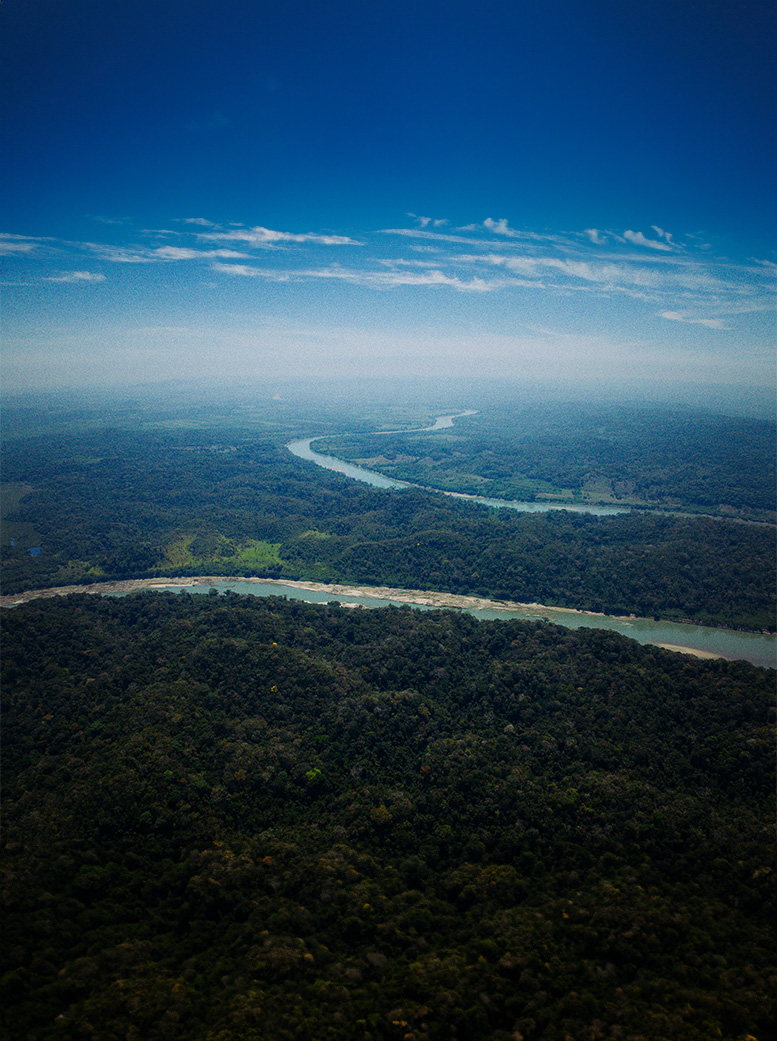
The Usumacinta River meanders through the lush borderlands of Guatemala
and Mexico, serving as both a natural divide and a lifeline for the
diverse ecosystems and communities that depend on its waters.
Exploring One of North America’s Last Tropical Rainforests: The Lacandona Jungle
Once a vast expanse shaped by ancient geological forces, the Lacandona Jungle has witnessed many changes: the coming and going of early hunter-gatherer bands, the rise and fall of an ancient Mesoamerican civilization, the return of the descendants of that civilization, the arrival of researchers, surveyors, agricultural expansion, the encroachment of modern industries, religious missionaries, and tourists—each leaving their mark on this delicate ecosystem. The Lacandona Jungle is recognized as one of North America’s most ecologically significant and biodiverse rainforests. Yet, as human activity continues to encroach, the jungle faces grave threats of deforestation, cultural erosion, and an uncertain future.
WORDS BY SARA LOPEZ
PHOTOGRAPHY BY DANILA ILIUSHCHENKO
Nestled in Mexico’s Southeastern region, The Lacandona Jungle serves as a crucial gateway to the Mesoamerican Biological Corridor, one of North America’s most significant ecological networks. This jungle, a rainforest that nourishes life on a continental scale, is truly a sight to behold— a mesmerizing tapestry of lush fauna, pulsing water systems, with towering grandmother-like ceibas. From the thunderous calls of howler monkeys to the gentle descent of falling leaves, the jungle hums with a symphonic tune. This thriving ecosystem—and the communities who protect it—have been the enduring inspiration for this very project.
To truly understand this jungle, we must go back to the beginning. The very beginning— like the continental drift theory beginning. Forged by time itself, the Lacandona Jungle’s origins trace back to the Cretaceous period, when this land lay beneath a vast, shallow sea. Over millions of years, the Earth’s tectonic plates sculpted its valleys and ridges, birthing the limestone caves and winding riverbeds that now weave through its dense canopy. The rise of the Maya Mountains and the formation of intricate karst landscapes shaped the terrain, making way for the extraordinary biodiversity that thrives there today. As glaciers came and went, the jungle adapted, transforming into the lush sanctuary it is today—a realm where those grandmother ceibas I was talking about earlier stand as silent guardians and where life pulses through every root, leaf, and river.
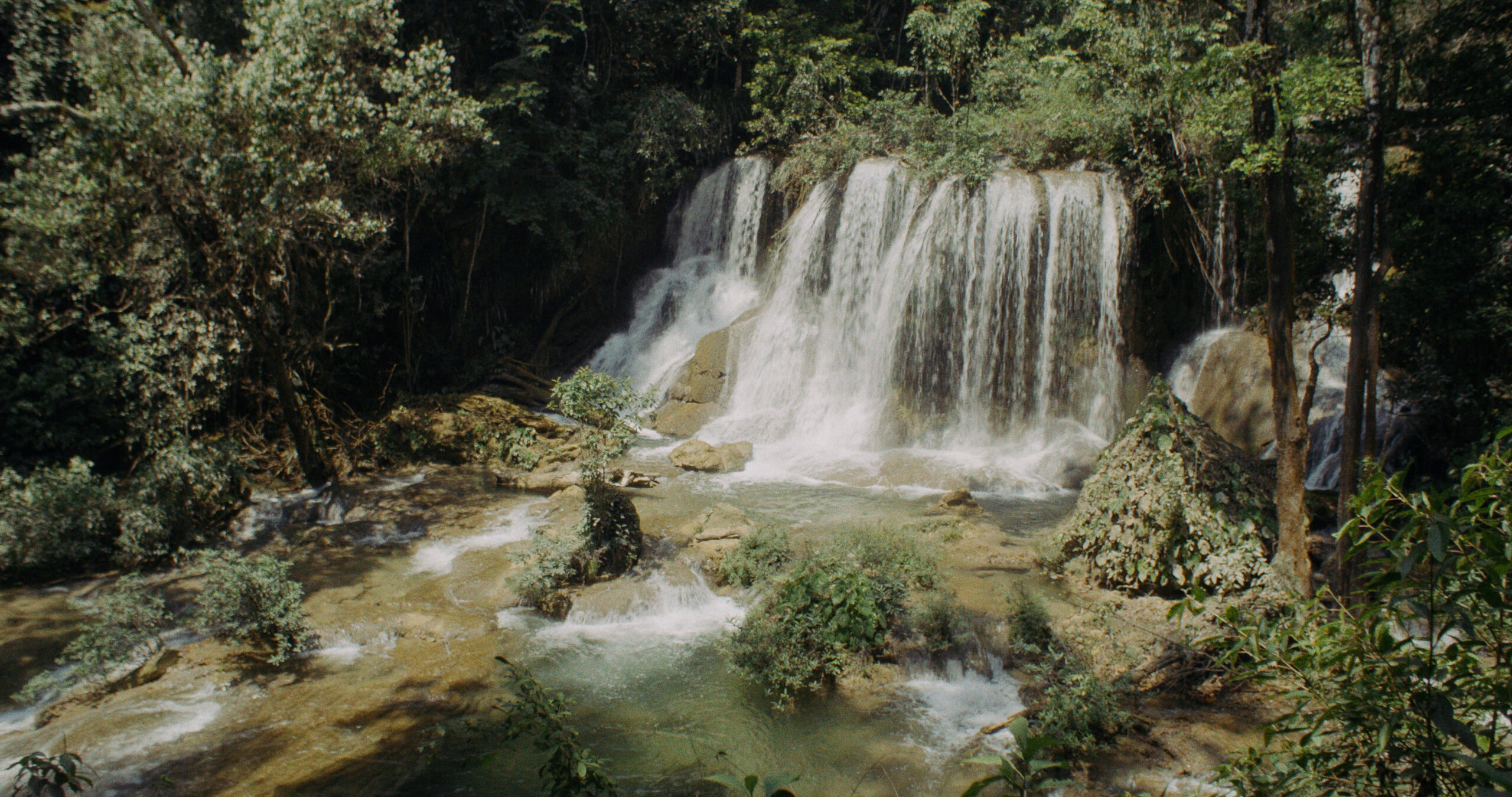
A waterfall in the community of Lacanjá Chansayab, a striking example of the region’s karst landscapes, marks the entrance to the Montes Azules Biosphere Reserve, nestled within the heart of the Lacandona Jungle.
Around 2000 BCE, the first bands of hunter gatherer arrived in the region, laying the foundation for what would become one of the most advanced civilizations of the ancient world—the Maya civilization. Over the next three millennia, their influence would stretch from the Yucatán Peninsula to the heart of Honduras, reaching breathtaking heights before gradually collapsing.
The Lacandona Jungle played a crucial role in shaping the Maya civilization, serving as both a cradle of cultural development and a sanctuary of natural abundance. It was here that the Maya flourished, building cooperative Milpa systems, vast networks of trade, language, art, mathematics, architecture, and governance. Notably, the Maya’s cosmology was among the most sophisticated of the ancient world, and although they led a life deeply connected to the stars and the universe, they also lived a life intricately intertwined with the rhythms of the rainforest.
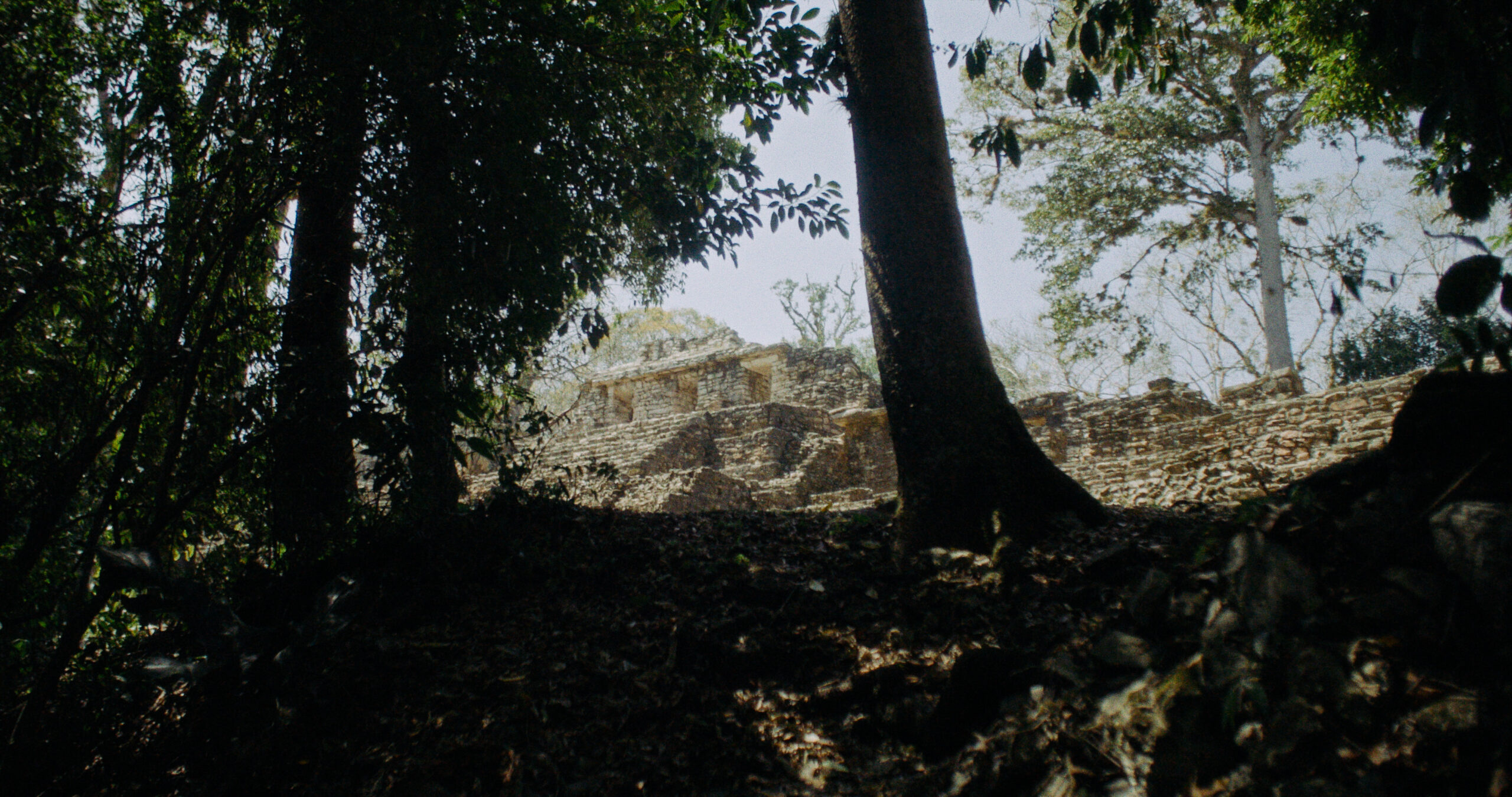
Along the banks of the Usumacinta River, the remains of Yaxchilan, an ancient Maya port that thrived during the Maya's Classic Period (250-900AD), the site is renowned for its impressive stelae, intricate carvings, and grand temples that once echoed the power of the Maya elite.
Centuries later, long after the great cities had fallen silent, the jungle would once again become a refuge. As Spanish colonization advanced in the Yucatan Peninsula, waves of Yucatec Maya and possibly Maya groups from what is now Guatemala fled into the Lacandona Jungle, seeking shelter in the depths of the rainforest. In a profound twist of history, they returned to the very lands their ancestors had once inhabited—reuniting with the sacred forests that had always been a part of their lineage.
Today, the descendants of those who returned to the rainforest call themselves the Lacandon Maya. For centuries—until the 19th century—they lived in relative isolation, their world shaped by the dense jungle that had long been their refuge. That changed when archaeologists, anthropologists, and researchers of all sorts ventured into the rainforest, searching for the secrets of the ancient Maya past (some were surveying the land for oil and trees for rubber). Through these encounters, the Lacandon Maya caught their first glimpses of the world beyond the borders of their sacred jungle.
The 20th century, however, ushered in the most profound transformations. Agricultural expansion, infrastructure development, population growth, commercial ventures, religious missionaries, and the rise of tourism forever altered both the daily lives of the Lacandon Maya and the jungle itself. What was once an isolated enclave of cultural preservation became increasingly entangled with the forces of globalization, reshaping traditions, livelihoods, and the very landscape they call home.
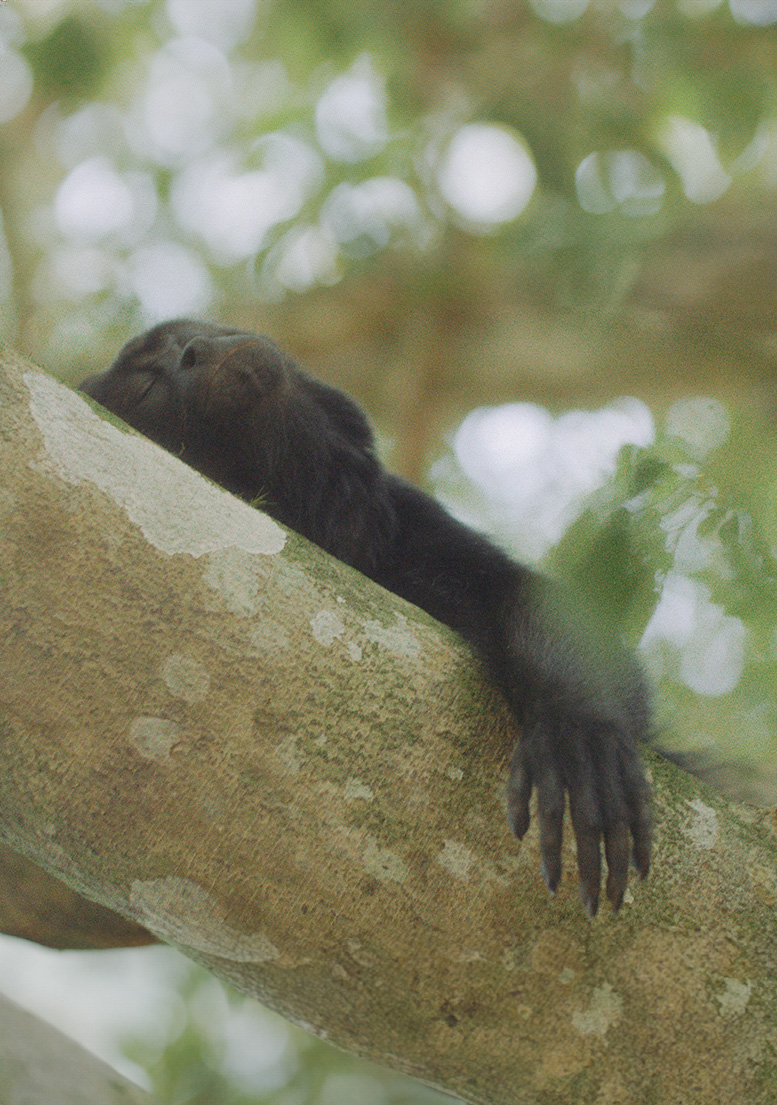
A spider monkey napping along the banks of the Usumacinta river.
Six years ago, when I first set foot in this vast Mesoamerican rainforest. I stayed with a Lacandon-Maya family. It marked the start of a lasting friendship—one that grew into a deep kinship with a family whose roots run through the heart of the rainforest. With each return visit, it became increasingly clear that even this Lacandon community, often regarded as one of the most traditional indigenous groups in Mexico, was not untouched by the far-reaching effects of globalization.
I remember from one of my first visits, I went to purchase something at a local bodega within the Lancanjá Chansayap community. As I walked in, I saw a Lacandon child browsing through TikTok on a smartphone. The bodega also served as an internet café where locals could access Wi-Fi. Although the connection speed was only 3.31 Mbps for the equivalent of two US dollars for 30 minutes, the internet had made its way into this remote corner of the jungle and members of the community came to access it.
As my connection with the family and community deepened, and my visits became more regular, I began to ask more questions about their traditions. I learned that many ancient practices, like tobacco making and incense burning, had quietly faded in the latter half of the 20th century. Rituals that had once defined daily life were now largely forgotten. Yet, one practice remained—the sacred ceremony of Balché.
Balché, a sacred drink that has been integral to the Lacandon Maya for centuries, is made from the bark of the endemic Balché tree, mixed with honey and water, and fermented over several days. In essence, the drink embodies their connection to the land and the spirit of the forest—a spirit that they call Hachakyum. The experience of witnessing the Balché ceremony wasn’t just an immersion into the practices of the Lacandon; it was an encounter with one of the last standing legacies of their Mayan roots.
Perhaps the most memorable experience in the Lacandona Jungle was being baptized as the madrina—the godmother—to Hayden and Ix, two children from the Lacandon Maya community. The Lacandones called this a “Mayan Baptism.” The ceremony was extremely profound, inheriting a responsibility for these two future Lacandones.
Clad in traditional Lacandon garb, I joined the Yuk Najkin family in this sacred ritual. The men in the family wore long white tunics, while myself and the women donned vibrant floral tunics, and everyone had meticulously prepared—showered and cleaned—before the ceremony began.
As part of the baptism, their grandfather and I walked the children through the jungle, showing them the land they would one day inherit. “Eres parte de esta selva.” You are part of this jungle, their grandfather, Chansaap would explain to Jayden and Ix, “y algun dia vas a cuidarla así como te cuida a ti.” And one day you are going to care for her just as she cares for you.
This symbolic act tied their futures to the jungle, reinforcing the sacred relationship between the Lacandon people and their environment. Being a part of this experience, I came to see the Lacandona Jungle as a place where the rainforest, identity, and tradition are woven together inseparably.
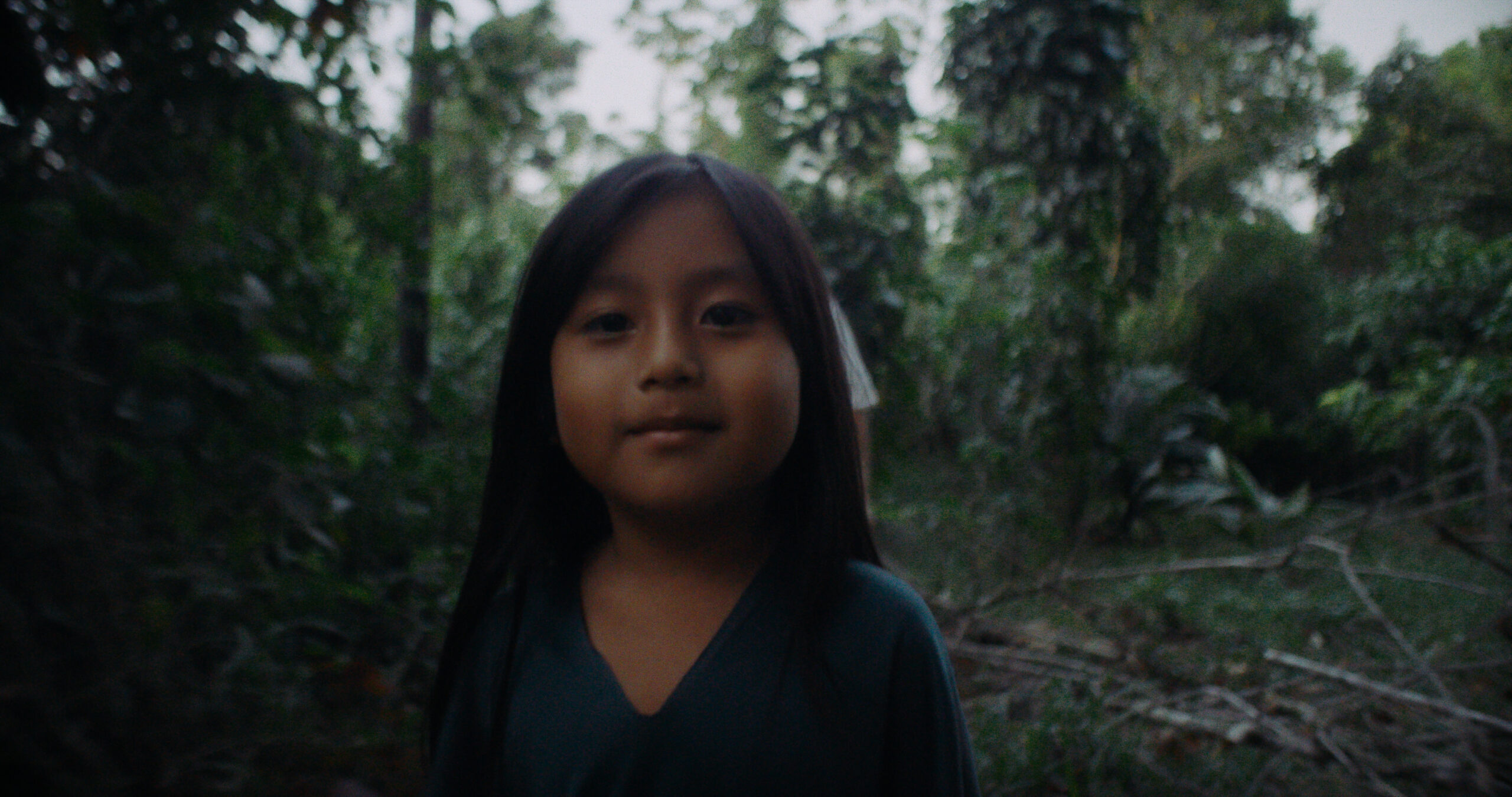
Jayden Yuk Najkin walking through the rainforest with his grandfather trailing behind him.
Beyond these deeply personal moments, the Lacandona Jungle holds profound significance within Latin America’s environmental and cultural narratives. As one of the most biodiverse regions on Earth, it serves as a vital refuge for countless species, many of which exist nowhere else. Despite covering roughly 1.8 million hectares—an area slightly smaller than El Salvador—the jungle is home to nearly a quarter of all wildlife species found in Mexico.
However, the Lacandona Jungle, once a vast expanse, has seen a dramatic decline over the past century. From its original state, only about 30% of the rainforest remains today. Deforestation driven by agriculture, illegal logging, and encroachment from modern industries has ravaged much of this delicate ecosystem. The remaining forest is under constant threat, and without immediate, sustained efforts to protect it, its future remains uncertain. The preservation of this rainforest is a crucial component for the future of the North American continent and the planet as a whole.
The connection I have to this jungle and the Lacandon community is a powerful reminder of how all living beings—human and non-human—are interconnected in ways that transcend ownership and division. The challenges faced by fragile ecosystems in one part of the planet affect us all, regardless of where we stand. This understanding is why the preservation of the Lacandona Jungle remains a priority. Protecting this rainforest goes beyond conserving trees and biodiversity—it is about safeguarding the stories, traditions, and the very essence of the people whose lives are deeply intertwined with the land. In these times of an uncertain future, the importance of preserving what remains of these ecosystems is a crucial step toward ensuring a more sustainable and resilient future for Planet Earth.